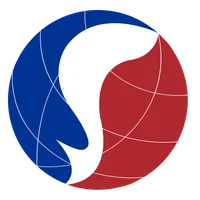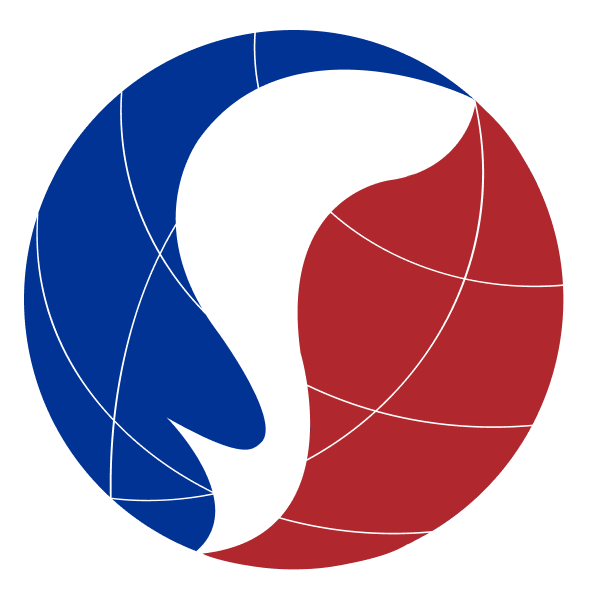
SalMar ASA
OSE:SALM


Utilize notes to systematically review your investment decisions. By reflecting on past outcomes, you can discern effective strategies and identify those that underperformed. This continuous feedback loop enables you to adapt and refine your approach, optimizing for future success.
Each note serves as a learning point, offering insights into your decision-making processes. Over time, you'll accumulate a personalized database of knowledge, enhancing your ability to make informed decisions quickly and effectively.
With a comprehensive record of your investment history at your fingertips, you can compare current opportunities against past experiences. This not only bolsters your confidence but also ensures that each decision is grounded in a well-documented rationale.
Do you really want to delete this note?
This action cannot be undone.

| 52 Week Range |
524
715.4
|
| Price Target |
|
We'll email you a reminder when the closing price reaches NOK.
Choose the stock you wish to monitor with a price alert.
This alert will be permanently deleted.
 SalMar ASA
SalMar ASA


 You don't have any saved screeners yet
You don't have any saved screeners yet

Welcome to the second quarter SalMar presentation 2018. With me today, I have CFO Trond Tuvstein, which will take us through the financial updates later on. The agenda is, as always, starting with the highlights.
And in Q2, we harvested 34,000 tonnes with a total operational EBIT on NOK 878.6 million. It was a good quarter in terms of operational performance and cost improvements. The price achievement was impacted negatively by a high contract share at 45%. We invested NOK 363 million in a new MBA (sic) [ MAB ] capacity and Ocean Farm 1, and the fishing net continues to develop according to plan.
New updates from the value chain are -- as a part of our smolt strategy. In fresh water, we are starting up the Follafoss Phase 2 build. This will give us a 450 tonne better production capacity on the site. This will be a total investment of NOK 152 million.
Within farming, we have invested NOK 363 million in new MBA capacity. This MBA is distributed with 440 tonnes in production area 7, which is Mid-Norway and 700 tonnes in area 10 to 13, which is Troms and Finnmark, altogether 2,130 tonnes.
Regarding to the market situation, we, with our InnovaMar, are still 1 among 3 last Lerøy's plants banned for export to China. We know the Norwegian authorities are working hard to get us open for the market and believe this will happen in the very near future.
And then the operational update, starting with Central Norway, which gave us our harvest volume at 16,700 tonnes and an EBIT on NOK 29.74, a good operational biological development. Prices are impacted by unfavorable harvest distribution, small volumes in April, May and higher volumes in June. Cost per kilo are impacted by treatment costs for the 2016 autumn generation S0s, representing 18% of the harvest volume.
The costs are expected to come down in Q3 due to strong biological performance for the 2017 spring generation. At the same time, we see higher cost on the S0s, mostly due to treatment costs as the S0s needs to be in the sea at the second autumn. We expect harvest volumes of 100,000 tonnes in Central Norway in 2018, which is up 4,000 tonnes from previous guiding.
Northern Norway. We got a harvest volume at 17,400 tonne and an EBIT on NOK 33.40. Even with a cold winter and spring, we see operational performance as expected. Prices achieved are supported by favorable distribution of harvest volume, opposite from Mid-Norway. This means high volumes from north in March, April.
Cost increased due to high accumulated treatment costs for 2016 S0s. 100% of the volume from the S0s in this quarter. Harvest volume moved from 2018 and into Q1 2019. Investment in additional MAB capacity will improve operational flexibility going forward and give us flexibility to optimization of the production in the region and which always also gives us the possibility to move fish from 2018 into 2019 to growing the fish bigger. We expect harvest volume of 43,000 tonne in 2018 in Northern Norway.
Sales and Processing. They gave us an operational EBIT on minus NOK 150 million. In Sales and Processing, we experienced a strong market in second quarter, and we still see a good demand in core markets. We have a contract share of 45% at prices below average spot. There is a satisfactory performance within the division. We see improved capacity utilization at InnovaMar quarter-on-quarter, which is important for us and gives us higher volumes through the factory in -- at this autumn. Contract share currently around 35% for Q3 2018 and 35% for the remaining volume of 2018.
Norskott Havbruk and the Scottish Sea Farms harvested 6,200 tonnes and delivering an EBIT on NOK 27.98 in second quarter. This is another strong quarter for Scottish Sea Farm, with a solid operational and biological performance on all sites and region in Scottish Sea Farms. They have a contract share of 48.5%. And a new freshwater facility being built with the first egg in Q4 2018 and first release of smolt in 2019. And Scottish Sea Farms guiding 26,000 tonnes for 2018.
Arnarlax harvested 1,000 tonne in second quarter and with an EBIT on NOK 2.70 per kilo. Earnings impacted by low volumes, high mortality and high cost from incident earlier this year. We have an ongoing structure that will continue to affect costs structuring. The company is still in early phase. We expect harvest volumes of 6,700 tonnes in 2018. To secure ongoing structuring and optimizing on the production, a mission is now completed worth NOK 200 million.
Smart Fish Farm. We are partnering with MariCulture for the development of Smart Fish Farm. Applied for 16 development licenses, and we are within development license scheme. This is a semisubmersible production unit enabling fish farming, possible for a route in the open ocean. We believe this unit will largely resolve the current space and environmental challenges for the industry and will give us opportunity to produce salmon on their own terms.
And then it's the financial update, and Trond will take over.
Thank you, Olav, and good morning, everyone. I will take you through the overall financial figures for the second quarter 2018. As usual, we begin with an overall waterfall analysis, building a bridge from last quarter's EBIT by kilo over to this quarter.
Last quarter, we achieved an EBIT per kilo of NOK 22.20. During the second quarter, the spot prices has moved from NOK 60.40 to NOK 68.80, an increase of NOK 8.40 per kilo. The intragroup pricing policy for the sales and industry segment is linked to the spot price. This means higher spot prices gives higher purchasing costs for the sales and industry segment. This, combined with a 45% order volume sold under fixed price contracts with that price achievement below the spot, explains why this segment has decreased EBIT per kilo by NOK 3.90 from the previous quarter.
For the farming segment, the cost of harvested biomass in this quarter has been lower than in the previous quarter, close to NOK 1 per kilo. On the other hand, the price achievement is weaker compared to the previous quarter, around NOK 1.70. Overall, this segment has decreased EBIT per kilo by NOK 0.70 compared to the first quarter. In total, this builds up an EBIT per kilo of NOK 25.80 in the second quarter.
To the P&L. Operating revenues in the second quarter amounted to NOK 2.9 billions, the same level as in the corresponding quarter in 2017. Volume is down 1,000 tonnes for 32 -- to 34,000 tonnes versus 35,000 tonnes in 2017. 45% of the volume, as mentioned, sold on fixed price contracts, with price achievements below the spot. All taken into account, the net price achievement in this quarter is at the same level as in the same quarter in 2017.
Earnings is impacted by higher costs year-over-year related to overheads and one-offs. More precisely, we have started amortization of the Ocean Farm investment. Also in the second quarter, we have done some destruction of our own produced farmed cleaner fish and take a write-down on the brood stock, approximately NOK 40 million in total. This gives us an operational EBIT for the quarter at NOK 879 million, corresponding to operational margin of 30%.
In the second quarter, we have recorded a positive fair value adjustment of NOK 25 million, mainly explained by change in accruals for onerous contracts. EBIT, after fair value adjustment, then ended at NOK 904 million in the second quarter.
Income from associated companies totaled NOK 79 million and is mainly related to the share of profit from Norskott and Arnarlax. Steady development in interest expense in the second quarter, a total of NOK 25 million, in addition to a positive foreign exchange effect of NOK 10 million. Net profit for the period, NOK 763 million.
And then over to the balance sheet and our financial position. As we can see, our total assets are at the same level as the end of last quarter, a total of NOK 13.4 million, an increase in our total assets by NOK 374 million, mainly explained by the investment in additional MAB capacity. Depreciation, almost at the same level as investment in tangible assets in this quarter, so no major changes in this item.
A slightly decrease in our total inventory. The volume of biomass is at the same level as 1 year ago, and the same goes for the share value adjustments. Steady development in account receivables and other short-term receivables during the quarter. The decrease in cash holdings of NOK 332 million will be explained in the cash flow statement.
During the second quarter, we have paid out dividend to our shareholders, explaining why equity is down from the last quarter. And this also explains the increase in interest-bearing debt. SalMar have a solid financial position, with an equity ratio close to 52%, net interest-bearing debt of NOK 2.5 billion and NOK 2.6 billion in undrawn credit facilities.
And then over to the cash flow statement. Another quarter with strong operational cash flow of NOK 832 million. We see a negative change in working capital. This is mainly due to reduction in account payable.
As mentioned, we have invested a total of NOK 363 million in additional MAB capacity, together with NOK 158 millions in operating assets. Also, receiving a dividend of NOK 80 million from other operations in Scottish Sea Farm. Altogether, a net outflow from investment activities of NOK 441 million in the quarter.
As mentioned, we have paid out dividend with NOK 2.15 billion, also increased interest-bearing debt by NOK 1.45 billion. In addition, paid interest to our financial creditors with NOK 25 millions in the quarter. Altogether, this leaves us with a negative change in cash of NOK 333 million in the second quarter.
Thank you. And back to you, Olav-Andreas.
Thanks, Trond. Then we move to the outlook for Q3 and rest of 2018.
The majority of the volume in Q3 will come from the S1 2017 generation, and we expect this will be contributing to reduce cost in third quarter 2018. The Ocean Farm volumes will reach the market in second half 2018. We will still continue to explore opportunities for capacity growth. The contract share for remaining 2018 volumes are currently at 35%. The global supply, expected to increase by 6% in 2018, and we expect a continued good demand in core markets. And the guiding of 143,000 tonne for 2018 is maintained.
That was the presentation we had for you this time. So thank you for listening to us, and goodbye.